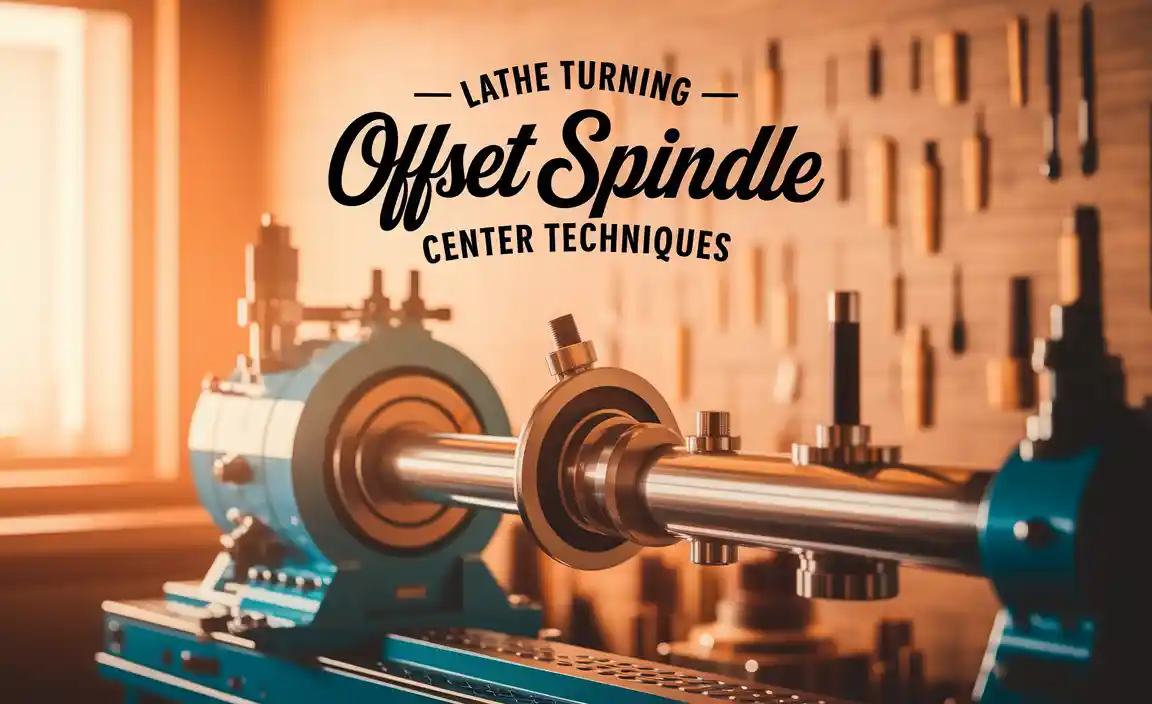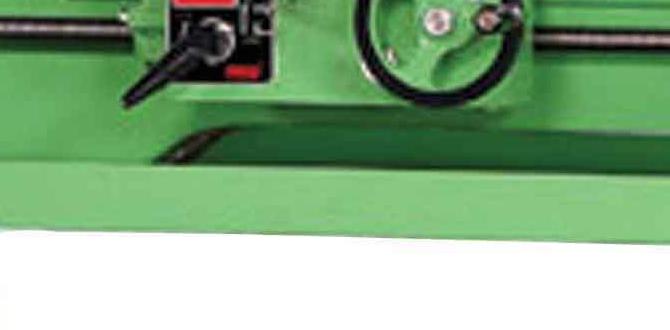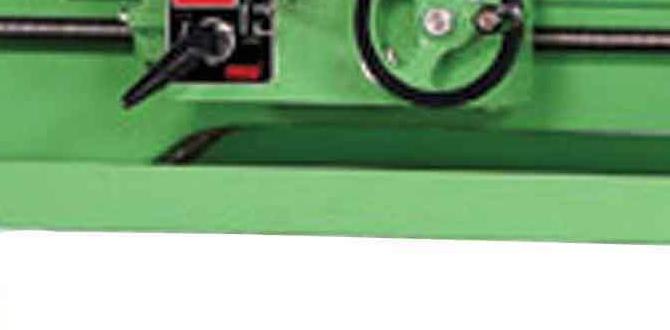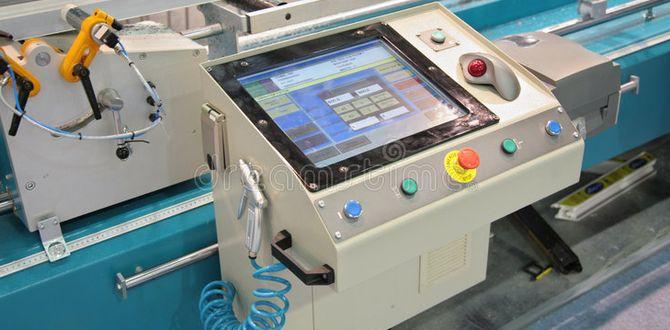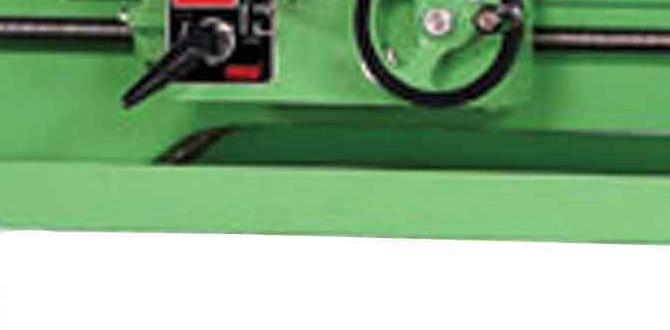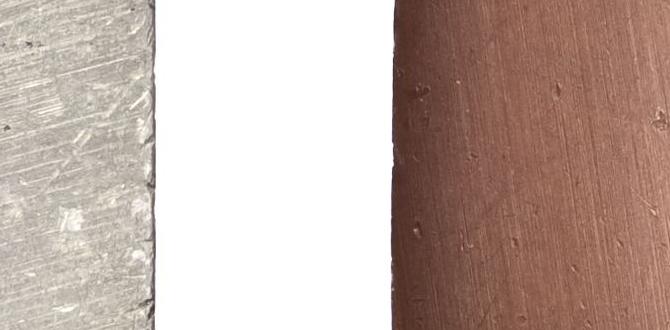Carbide end mills are essential for achieving heat-resistant cuts in PMMA (acrylic), preventing melting and ensuring clean, precise results for your projects. Understanding which type to use will make a big difference in your fabrication success.
PMMA, often known as acrylic, is a fantastic material for all sorts of projects. It’s clear, durable, and relatively easy to work with. However, anyone who’s tried to machine it will tell you: it can get hot. When PMMA heats up too much during cutting, it can melt, gum up your tools, and leave you with rough, ugly edges. This can be super frustrating when you’re trying to make something look perfect. But don’t worry! The right tool can make all the difference. We’re going to dive into how specific carbide end mills are your secret weapon for tackling PMMA’s heat problem. Get ready to make those clean cuts you’ve been dreaming of!
Why PMMA Gets Hot and What That Means for Machining
PMMA, or polymethyl methacrylate, has a relatively low glass transition temperature, which is the point at which it starts to soften. For PMMA, this is typically around 105°C (221°F). When you’re machining, the friction from cutting can quickly raise the temperature of the material and the cutting tool. If this heat isn’t managed properly, it leads to a cascade of problems:
- Melting: The PMMA can start to melt instead of cutting cleanly. This forms gummy, sticky chips that adhere to the end mill.
- Tool Clogging: The melted plastic coats the cutting edges of your end mill, reducing its effectiveness and leading to poor surface finish.
- Poor Edge Quality: Melted edges are not smooth and can be warped, cracked, or generally unsightly.
- Reduced Tool Life: Excessive heat and material buildup can quickly damage and wear out your cutting tools.
- Chipping and Cracking: Rapid heating and cooling cycles can stress the material, leading to micro-cracks or larger fractures.
The goal in machining PMMA is to remove material quickly and efficiently while keeping the temperature as low as possible. This is where the choice of cutting tool becomes incredibly important.
Introducing the Carbide End Mill: Your PMMA Cutting Champion
When it comes to machining PMMA effectively, especially with heat resistance in mind, carbide end mills are generally the superior choice over their High-Speed Steel (HSS) counterparts. Here’s why:
- Hardness and Heat Resistance: Carbide is significantly harder and more heat-resistant than HSS. This means it can maintain its cutting edge at higher temperatures without softening or deforming.
- Sharpness Retention: Carbide tools hold their sharp edges much longer than HSS, which is crucial for making clean cuts in plastic.
- Material Removal Rate: The hardness of carbide allows for faster cutting speeds and deeper cuts, which can actually reduce the total time the tool is in contact with the material, thereby reducing heat buildup.
However, not all carbide end mills are created equal when it comes to PMMA. The geometry and coating of the end mill play a vital role in its performance.
Key Features of Carbide End Mills for PMMA
To combat the heat issues, we need end mills specifically designed for plastics and softer materials, often referred to as “plastic cutting” or “acrylic” end mills. These typically share certain characteristics:
1. Flute Geometry: The Angle of Attack
The shape of the flutes (the helical grooves on the cutting tool) is critical. For PMMA, you generally want an end mill with:
- High Rake Angle: This refers to the angle of the cutting face relative to the workpiece. A high rake angle (often 20-30 degrees or more) creates a sharper cutting edge. Think of it like a sharp knife – it slices through material more easily with less force and therefore less heat generated.
- Polished or Mirror-Finish Flutes: Smooth, polished flutes help material (in this case, melted PMMA) slide away from the cutting edge rather than sticking to it. This prevents buildup and contributes to a cleaner cut.
- Few Flutes: For plastics like PMMA, two-flute end mills are often preferred. This provides adequate chip evacuation without overcrowding the flutes, which can lead to heat buildup and chip re-cutting. More flutes are generally better for harder materials where chip load is smaller.
2. Coatings: An Extra Layer of Defense
While not always necessary, certain coatings can further enhance the performance of a carbide end mill in PMMA:
- Uncoated: For many PMMA applications, a high-quality uncoated carbide end mill with a polished flute finish is perfectly adequate and often the most cost-effective.
- TiN (Titanium Nitride): A common, general-purpose coating. It adds some hardness and reduces friction, which can be helpful, but it’s not specifically optimized for plastics.
- ZrN (Zirconium Nitride): Often referred to as a “gold” coating, ZrN runs cooler than TiN and has better lubricity, making it a good choice for plastics.
- DLC (Diamond-Like Carbon): This is an excellent choice for plastics. DLC coatings are extremely hard and have very low friction coefficients, which drastically reduces heat buildup and prevents material welding to the cutter.
For PMMA, prioritizing a polished flute finish is usually more important than a specific coating, but a DLC coating would be considered top-tier for demanding applications.
3. Material: Solid Carbide
“Carbide” as a material refers to cemented carbide, a composite material typically made of tungsten carbide particles within a metal binder (usually cobalt). Solid carbide end mills are made entirely from this material, offering superior stiffness, wear resistance, and heat resistance compared to HSS.
4. Shank and Length: Practical Considerations
For general-purpose machining, you’ll encounter various shank diameters and lengths. A common standard is a 1/4 inch shank, often paired with a 1/8 inch or 1/4 inch diameter cutting head.
- 1/4 Inch Shank: This is a very common size, providing good rigidity and compatibility with many collet systems found on desktop CNC machines and milling machines.
- 1/8 Inch Diameter Cutter: A smaller diameter is useful for detailed work, engraving, or cutting intricate shapes.
- 1/4 Inch Diameter Cutter: A larger diameter is suitable for heavier cuts and faster material removal on larger surface areas.
- Standard Length: This usually refers to a length where the cutting portion is approximately 1-2 times the diameter of the cutter, with a total flute length typically ranging from 1/2 inch to 1 inch for 1/8″ and 1/4″ diameter tools. Shorter flute lengths can increase rigidity, which is beneficial.
The keyword “carbide end mill 1/8 inch 1/4 shank standard length for pmma heat resistant” points towards a tool optimized for smaller, detailed work on PMMA, focusing on its heat-resistant properties.
Choosing the Right End Mill: A Comparison
Let’s break down the types of end mills and how they stack up for PMMA.
| Feature | High-Speed Steel (HSS) End Mill | Standard Carbide End Mill | Carbide Plastic/Acrylic End Mill (2-Flute): |
|---|---|---|---|
| Hardness | Moderate | High | High |
| Heat Resistance | Low – prone to softening | Good, but edge can still get hot | Excellent, designed to minimize heat |
| Edge Sharpness & Retention | Moderate, dulls quicker | Very Good | Excellent, holds sharp edge longer |
| Friction Coefficient | Higher | Lower than HSS | Lowest (especially with polished flutes/coatings) |
| Rake Angle | Often lower (e.g., 0-15 degrees) | Variable, typically moderate | High (e.g., 20-30+ degrees) |
| Flute Finish | Can be standard | Can be standard or polished | Polished or mirror finish is common |
| Flute Count | 2, 3, or 4 flutes common | 2, 3, or 4 flutes common | Typically 1 or 2 flutes |
| Best For PMMA? | Not recommended | Possible for light use, but not optimal | Highly Recommended |
As you can see, the specialized Carbide Plastic/Acrylic End Mill is the clear winner for machining PMMA, especially when heat resistance is the primary concern.
Machining PMMA: Best Practices for Heat Management
Even with the perfect end mill, good machining practices are essential for preventing PMMA from melting. Think of it as a team effort between your tool and your technique.
1. Cutting Speed and Feed Rate: Finding the Sweet Spot
This is arguably the most critical factor.
- Spindle Speed (RPM): Generally, you’ll want to run PMMA at relatively high spindle speeds. This allows the tool to cut through the material quickly, minimizing the time spent in any one spot. For a 1/4 inch end mill, speeds between 10,000 and 20,000 RPM are common, but always consult your CNC machine’s capabilities and the end mill manufacturer’s recommendations.
- Feed Rate (IPM or mm/min): The feed rate determines how fast the tool moves through the material. You need a feed rate that is fast enough to take a decent chip load, but not so fast that it causes excessive friction or makes the machine struggle. A good starting ratio of feed rate to spindle speed is crucial. Too slow a feed rate at a high RPM will generate excessive heat.
- Chip Load: The thickness of the material being removed by each cutting edge. For PMMA, you generally want a relatively generous chip load to remove material efficiently and prevent chip recutting.
It’s often recommended to start with manufacturer recommendations and then fine-tune. A good rule of thumb is that you should hear a consistent, light ‘chip-shedding’ sound rather than a high-pitched whine or screech, which can indicate rubbing and heat buildup.
2. Depth of Cut and Stepover
- Depth of Cut (DOC): For PMMA, it’s usually best to machine in multiple shallow passes rather than one deep pass. This reduces the load on the tool and the material, helping to dissipate heat. A DOC of about half the tool diameter or less is a good starting point.
- Stepover: This is the amount the tool moves sideways between passes. For finishing passes, a small stepover (e.g., 10-20% of the tool diameter) is used for a smooth surface. For roughing, a larger stepover is acceptable.
3. Air Cutting and Chip Evacuation
- Minimize Air Cutting: Try to program your toolpaths to avoid unnecessary movements in the air, as this also generates heat.
- Effective Chip Evacuation: Ensure your machine and tooling setup allow chips to be cleared away from the cutting zone easily. This is where the polished flutes and 2-flute design of plastic end mills shine.
4. Lubrication/Cooling: The Power of Air
While flood coolant is common in metal machining, it’s often not the best choice for PMMA. Water can cause some types of acrylic to craze (develop fine cracks).
- Compressed Air: A blast of compressed air directed at the cutting zone is the most common and effective way to cool PMMA. It blows away chips AND helps to keep the material and tool cool, without introducing moisture that can damage the plastic.
- High-Volume Air Blast: Some specialized CNC machines have systems for very high-volume air, which is even better.
Consider using an air blast nozzle on your CNC spindle or a separate air source directed precisely at the cutting point.
5. Tool Holding and Rigidity
Ensure your end mill is held securely in a quality collet or tool holder. Any runout (wobble) in the tool will cause uneven cutting, increased friction, and heat. A rigid setup transfers cutting forces efficiently and reduces vibration, leading to better cut quality and less heat generation.
Troubleshooting Common PMMA Machining Issues
Even with the best setup, you might run into trouble. Here are some common issues and how to fix them:
- Melting/Gummy Chips:
- Cause: Too slow feed rate, too slow spindle speed, dull tool, insufficient air blast, too deep of a cut.
- Solution: Increase spindle speed, increase feed rate (ensure you maintain chip load), check and replace tool, improve air blast, reduce depth of cut.
- Edge Chipping/Cracking:
- Cause: Brittle PMMA, dull tool, too fast a feed rate, too shallow depth of cut causing rubbing, inadequate support for the workpiece.
- Solution: Use a sharper tool, adjust feed rate, increase depth of cut slightly, ensure workpiece is well-supported to prevent vibration.
- Poor Surface Finish/Tool Marks:
- Cause: Dull tool, excessive tool runout, incorrect stepover on finishing passes, material buildup on tool.
- Solution: Replace or sharpen tool, check and clean tool holder/collet, use a finer stepover for finishing, use a dedicated plastic end mill with good chip evacuation.
The Importance of Material Support
Properly supporting your PMMA workpiece is just as vital as choosing the right end mill and settings.
- Backing Material: Always use a backing material, such as MDF, plywood, or a sacrificial piece of the same PMMA. This provides a stable surface for the end mill to cut into on its final pass. It prevents blowout, chipping, and vibration at the exit of the cut.
- Clamping: Secure the PMMA firmly to your machine bed. Vacuum tables are excellent for sheet goods like PMMA, distributing holding force evenly. If using clamps, ensure they are placed strategically so they don’t interfere with the toolpath and are tight enough to prevent any movement.
When to Consider Other Tooling Options (and why not for PMMA!)
For other plastics, different tools might be suitable. For example, some softer plastics might benefit from slightly different flute geometries or even specialized plastics cutters made from high-carbon steel. However, for PMMA, the thermal properties make carbide the undisputed champion.
You might see end mills specifically designed for plastics and composites that incorporate features like variable helix angles or unique geometries. These can be excellent. But at a fundamental level, the combination of high rake angles, polished flutes, and the inherent properties of carbide is key for PMMA’s high heat resistance requirements.
Where to Find Quality Carbide End Mills for PMMA
When you’re looking for the right tool, focus on reputable tool manufacturers and suppliers. Look for end mills explicitly marketed for plastics, acrylic, or non-ferrous metals, and check the specifications for flute count, rake angle, and flute finish.
Brands that offer good quality carbide tooling suitable for plastics include:
- SGS Tool Company
- Garr Tool
- Harvey Tool
- Onsrud Cutter
- Amana Tool (especially for woodworking applications that may overlap with plastics)
For the specific niche of “carbide end mill 1/8 inch 1/4 shank standard length for pmma heat resistant,” you’ll likely find these at specialized CNC tooling suppliers or even larger industrial supply stores online. Always read product descriptions carefully and look for mentions of “plastic cutting,” “high polish,” or “high rake angles.”
You can learn more about cutting tool materials and geometries from resources like the National Institute of Standards and Technology (NIST) Manufacturing Extension Partnership (MEP) or machining tutorials from universities with strong engineering programs. For instance, publications from the Manufacturing Engineering Magazine often cover advanced tooling topics.
Frequently Asked Questions (FAQ)
What is the main problem when machining PMMA?
The main problem is heat buildup. PMMA has a low melting point, and friction during machining can cause it to melt, leading to tool clogs, poor cut quality, and damage to the material.
Why are carbide end mills better for PMMA than HSS?
Carbide is much harder and more heat-resistant than High-Speed Steel (HSS). This allows carbide tools to maintain their sharp edge and cutting ability at the higher temperatures generated when machining PMMA, preventing melting much more effectively.
What kind of end mill geometry is best for PMMA?
For PMMA, a 2-flute (or sometimes 1-flute) carbide end mill with a high positive rake angle (typically 20-30 degrees or more) and highly polished or mirror-finish fl

